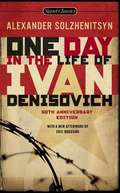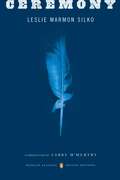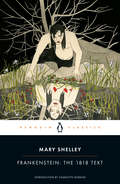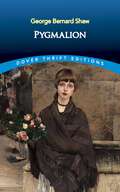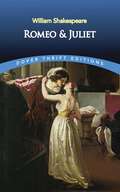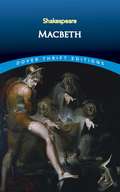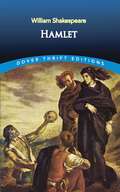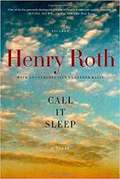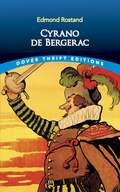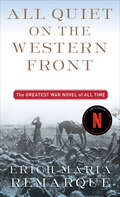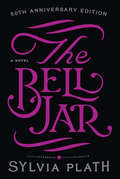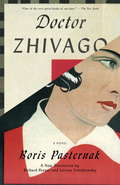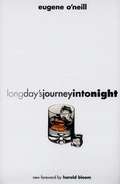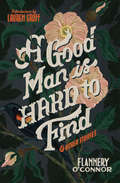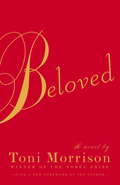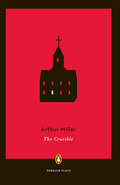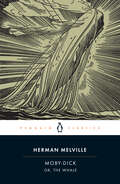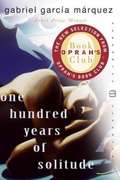Special Collections
College Board's 100 Books for College-Bound Readers
- Table View
- List View
One Day In The Life Of Ivan Denisovich
by Yevgeny Yevtushenko and Aleksandr Solzhenitsyn and Eric BogosianThe first published novel of controversial Nobel Prize winning Russian author Alexander Solzhenitsyn.
In the madness of World War II, a dutiful Russian soldier is wrongfully convicted of treason and sentenced to ten years in a Siberian labor camp.
So begins this masterpiece of modern Russian fiction, a harrowing account of a man who has conceded to all things evil with dignity and strength.
First published in 1962, One Day in the Life of Ivan Denisovich is considered one of the most significant works ever to emerge from Soviet Russia.
Illuminating a dark chapter in Russian history, it is at once a graphic picture of work camp life and a moving tribute to man's will to prevail over relentless dehumanization.
Includes an Introduction by Yevgeny Yevtushenko and an Afterword by Eric Bogosian
Ceremony
by Larry Mcmurtry and Leslie Marmon SilkoThe great Native American Novel of a battered veteran returning home to heal his mind and spirit
More than thirty-five years since its original publication, Ceremony remains one of the most profound and moving works of Native American literature, a novel that is itself a ceremony of healing. Tayo, a World War II veteran of mixed ancestry, returns to the Laguna Pueblo Reservation. He is deeply scarred by his experience as a prisoner of the Japanese and further wounded by the rejection he encounters from his people. Only by immersing himself in the Indian past can he begin to regain the peace that was taken from him. Masterfully written, filled with the somber majesty of Pueblo myth, Ceremony is a work of enduring power. The Penguin Classics Deluxe Edition contains a new preface by the author and an introduction by Larry McMurtry.
For more than seventy years, Penguin has been the leading publisher of classic literature in the English-speaking world. With more than 1,700 titles, Penguin Classics represents a global bookshelf of the best works throughout history and across genres and disciplines. Readers trust the series to provide authoritative texts enhanced by introductions and notes by distinguished scholars and contemporary authors, as well as up-to-date translations by award-winning translators.
Frankenstein
by Charlotte Gordon and Mary ShelleyFor the bicentennial of its first publication, Mary Shelley’s original 1818 text, introduced by National Book Critics Circle award-winner Charlotte Gordon.
2018 marks the bicentennial of Mary Shelley’s seminal novel.
For the first time, Penguin Classics will publish the original 1818 text, which preserves the hard-hitting and politically-charged aspects of Shelley’s original writing, as well as her unflinching wit and strong female voice.
This edition also emphasizes Shelley’s relationship with her mother—trailblazing feminist Mary Wollstonecraft, who penned A Vindication of the Rights of Woman—and demonstrates her commitment to carrying forward her mother’s ideals, placing her in the context of a feminist legacy rather than the sole female in the company of male poets, including Percy Shelley and Lord Byron.
This edition includes a new introduction and suggestions for further reading by National Book Critics Circle award-winner and Shelley expert Charlotte Gordon, literary excerpts and reviews selected by Gordon, and a chronology and essay by preeminent Shelley scholar Charles E. Robinson.
Pygmalion
by George Bernard ShawOne of George Bernard Shaw's best-known plays, Pygmalion was a rousing success on the London and New York stages, an entertaining motion picture and a great hit with its musical version, My Fair Lady.
An updated and considerably revised version of the ancient Greek legend of Pygmalion and Galatea, the 20th-century story pokes fun at the antiquated British class system.
In Shaw's clever adaptation, Professor Henry Higgins, a linguistic expert, takes on a bet that he can transform an awkward cockney flower seller into a refined young lady simply by polishing her manners and changing the way she speaks.
In the process of convincing society that his creation is a mysterious royal figure, the Professor also falls in love with his elegant handiwork.
The irresistible theme of the emerging butterfly, together with Shaw's brilliant dialogue and splendid skills as a playwright, have made Pygmalion one of the most popular comedies in the English language.
A staple of college drama courses, it is still widely performed.
Romeo and Juliet
by William ShakespeareOne of Shakespeare's most popular and accessible plays, Romeo and Juliet tells the story of two star-crossed lovers and the unhappy fate that befell them as a result of a long and bitter feud between their families.
The play contains some of Shakespeare's most beautiful and lyrical love poetry and is perhaps the finest celebration of the joys of young love ever written.
This inexpensive edition includes the complete, unabridged text with explanatory footnotes.Ideal for classroom use, it is a wonderful addition to the home library of anyone wanting to savor one of literature's most sublime paeans to love.
A Midsummer Night's Dream
by William Shakespeare and David Bevington and David Scott KastanMagic, love spells, and an enchanted wood provide the materials for one of Shakespeare's most delightful comedies. When four young lovers, fleeing the Athenian law and their own mismatched rivalries, take to the forest of Athens, their lives become entangled with a feud between the King and Queen of the Fairies.
Some Athenian tradesmen, rehearsing a play for the forthcoming wedding of Duke Theseus and his bride, Hippolyta, unintentionally add to the hilarity.
The result is a marvelous mix-up of desire and enchantment, merriment and farce, all touched by Shakespeare's inimitable vision of the intriguing relationship between art and life, dreams and the waking world.
Macbeth
by William ShakespeareOne of the great Shakespearean tragedies, Macbeth is a dark and bloody drama of ambition, murder, guilt, and revenge.
Prompted by the prophecies of three mysterious witches and goaded by his ambitious wife, the Scottish thane Macbeth murders Duncan, King of Scotland, in order to succeed him on the throne.
This foul deed soon entangles the conscience-stricken nobleman in a web of treachery, deceit, and more murders, which ultimately spells his doom.
Set amid the gloomy castles and lonely heaths of medieval Scotland, Macbeth paints a striking dramatic portrait of a man of honor and integrity destroyed by a fatal character flaw and the tortures of a guilty imagination.
A selection of the Common Core State Standards Initiative.
Hamlet
by William ShakespeareIn this quintessential Shakespeare tragedy, a young prince's halting pursuit of revenge for the murder of his father unfolds in a series of highly charged confrontations that have held audiences spellbound for nearly four centuries.
Those fateful exchanges, and the anguished soliloquies that precede and follow them, probe depths of human feeling rarely sounded in any art.
The title role of Hamlet, perhaps the most demanding in all of Western drama, has provided generations of leading actors their greatest challenge.
Yet all the roles in this towering drama are superbly delineated, and each of the key scenes offers actors a rare opportunity to create theatrical magic.
As if further evidence of Shakespeare's genius were needed, Hamlet is a unique pleasure to read as well as to see and hear performed.
The full text of this extraordinary drama is reprinted here from an authoritative British edition complete with illuminating footnotes.
A selection of the Common Core State Standards Initiative.
The Catcher in the Rye
by J. D. SalingerThe hero-narrator of THE CATCHER IN THE RYE is an ancient child of sixteen, a native New Yorker named Holden Caulfield. Through circumstances that tend to preclude adult, secondhand description, he leaves his prep school in Pennsylvania and goes underground in New York City for three days.
The boy himself is at once too simple and too complex for us to make any final comment about him or his story. Perhaps the safest thing we can say about Holden is that he was born in the world not just strongly attracted to beauty but, almost, hopelessly impaled on it.
There are many voices in this novel: children's voices, adult voices, underground voices--but Holden's voice is the most eloquent of all. Transcending his own vernacular, yet remaining marvelously faithful to it, he issues a perfectly articulated cry of mixed pain and pleasure. However, like most lovers and clowns and poets of the higher orders, he keeps most of the pain to, and for, himself. The pleasure he gives away, or sets aside, with all his heart. It is there for the reader who can handle it to keep.
Call It Sleep
by Henry RothA sensitive boy's growing up is one strand in a complex web of his parent's tense life, their immigrant strangeness in a new land.
Cyrano de Bergerac
by Edmond RostandWidely considered the most popular modern French play, Cyrano de Bergerac has dazzled audiences with its wit and eloquence since it premiered in 1897.
Cyrano, a quarrelsome, hot-tempered swordsman, as famous for his dueling skills and pugnacity as for his inordinately long nose, is hopelessly enamored of the beautiful Roxane.
She, in turn, is in love with Christian, a handsome but inarticulate and slow-witted suitor.
Asked for help by Christian in wooing Roxane, Cyrano pours out his heart in romantic dialogues -- delivered under cover of night and dense foliage -- and through ardent love letters written in the name of Christian.
Presented here in a rich blank verse translation by poet Louis Untermeyer, this beloved romantic comedy will be warmly received by theater buffs as well as students and teachers of drama and literature.
All Quiet on the Western Front
by Erich Maria Remarque and Arthur Wesley WheenPaul Baumer enlisted with his classmates in the German army of World War I.
Youthful, enthusiastic, they become soldiers.
But despite what they have learned, they break into pieces under the first bombardment in the trenches.
And as horrible war plods on year after year, Paul holds fast to a single vow: to fight against the principles of hate that meaninglessly pits young men of the same generation but different uniforms against each other--if only he can come out of the war alive.
The Crying of Lot 49
by Thomas PynchonThe highly original satire about Oedipa Maas, a woman who finds herself enmeshed in a worldwide conspiracy, meets some extremely interesting characters and attains a not inconsiderable amount of self-knowledge.
Swann’s Way
by Marcel ProustMarcel Proust's seven-volume masterpiece, In Search of Lost Time (A la recherche du temps perdu), has inspired many superlatives, among them "the greatest novel ever written" and "the greatest novel of the first half of the twentieth century. "
Swann's Way, the first volume of the Recherche and the most widely read and taught of all the volumes, is the ideal introduction to Proust's inventive genius.
This Norton Critical Edition is based on C. K. Scott Moncrieff's translation, which introduced the English-speaking world to Proust and was published during the author's lifetime. It is accompanied by Susanna Lee's introduction, note on the text, and explanatory annotations.
Marcel Proust was forty-two years old when Swann's Way was published, but its foundational ideas and general shape had been evolving for decades.
"Contexts" includes a 1912 reader's report of the manuscript that exemplifies publishers' complicated reactions to Proust's new form of writing.
Also included are three important post-publication reviews of the novel, by Elie-Joseph Bois, Lucien Daudet, and Paul Souday, as well as Andr#65533; Arnyvelde's 1913 interview with Proust.
The fourteen critical essays and interpretations of Swann's Way in this volume speak to the novel's many facets--from the musical to the artistic to its representations of Judaism and homosexuality.
Contributors include G#65533;rard Genette, whose "Metonymy in Proust" appears here in English translation for the first time, along with Gilles Deleuze, Roger Shattuck, Claudia Brodsky, Julia Kristeva, Margaret E. Gray, and Alain de Botton, among others.
The edition also includes a Chronology of Proust's Life and Work, a Selected Chronology of French Literature from 1870 to 1929, and a Selected Bibliography.
The Tales of Edgar Allan Poe
by Edgar Allan PoeVocabulary is a critical part of studying for the SATs. Memorizing words that are written on flashcards can be difficult because they are not put in the context of a sentence.
Kaplan's SAT Score-Raising Classics make learning SAT vocabulary words easier and more enjoyable for students. Classic novels that are taught throughout high school can now be read while learning vocabulary words that frequently appear on the SAT exam.
Designed for easy use, these books feature the actual text on one side of the page, with the word definitions on the opposite side. In addition, the vocabulary words are in easy-to-spot bold typeface throughout.
Each Kaplan SAT Score-Raising Classic features:* The complete text of the classic novel* Hundreds of vocabulary words tested on the SAT exam* Definitions for each highlighted work on the facing page* A pronunciation guide* An index for easy reference* A teachers' guide that includes instructional suggestions, in-class activities, and homework assignments posted on our web site: kaptest.com
Kaplan's SAT Score-Raising Classics series give readers get an invaluable learning tool and an enjoyable reading experience.
The Bell Jar
by Sylvia PlathSylvia Plath's shocking, realistic, and intensely emotional novel about a woman falling into the grip of insanity
Esther Greenwood is brilliant, beautiful, enormously talented, and successful, but slowly going under--maybe for the last time.
In her acclaimed and enduring masterwork, Sylvia Plath brilliantly draws the reader into Esther's breakdown with such intensity that her insanity becomes palpably real, even rational--as accessible an experience as going to the movies.
A deep penetration into the darkest and most harrowing corners of the human psyche, The Bell Jar is an extraordinary accomplishment and a haunting American classic.
Doctor Zhivago
by Boris Pasternak and Larissa Volokhonsky and Richard PevearBoris Pasternak's widely acclaimed novel comes gloriously to life in a magnificent new translation by Richard Pevear and Larissa Volokhonsky, the award-winning translators of War and Peace and Anna Karenina, and to whom, The New York Review of Books declared, "the English-speaking world is indebted."
First published in Italy in 1957 amid international controversy--the novel was banned in the Soviet Union until 1988, and Pasternak declined the Nobel Prize a year later under intense pressure from Soviet authorities--Doctor Zhivago is the story of the life and loves of a poet-physician during the turmoil of the Russian Revolution.
Taking his family from Moscow to what he hopes will be shelter in the Ural Mountains, Zhivago finds himself instead embroiled in the battle between the Whites and the Reds. Set against this backdrop of cruelty and strife is Zhivago's love for the tender and beautiful Lara: pursued, found, and lost again, Lara is the very embodiment of the pain and chaos of those cataclysmic times.
Stunningly rendered in the spirit of Pasternak's original--resurrecting his style, rhythms, voicings, and tone--and including an introduction, textual annotations, and a translators' note, this edition of Doctor Zhivago is destined to become the definitive English translation of our time.From the Hardcover edition.
Animal Farm
by George OrwellGeorge Orwell's classic satire of the Russian Revolution is an intimate part of our contemporary culture.
It is the account of the bold struggle, initiated by the animals, that transforms Mr. Jones's Manor Farm into Animal Farm--a wholly democratic society built on the credo that All Animals Are Created Equal.
Out of their cleverness, the pigs Napoleon, Squealer, and Snowball emerge as leaders of the new community in a subtle evolution that proves disastrous.
The climax is the brutal betrayal of the faithful horse Boxer, when totalitarian rule is reestablished with the bloodstained postscript to the founding slogan: But some Animals Are More Equal Than Others. . . .
Long Day's Journey into Night
by Eugene O'NeillEugene O'Neill's autobiographical play Long Day's Journey into Night is regarded as his finest work.
First published by Yale University Press in 1956, it won the Pulitzer Prize in 1957 and has since sold more than one million copies.
This edition, which includes a new foreword by Harold Bloom, coincides with a new production of the play starring Brian Dennehy, which opens in Chicago in January 2002 and in New York in April.
A Good Man Is Hard to Find and Other Stories
by Flannery O'ConnorThe collection that established O'Connor's reputation as one of the american masters of the short story.
The volume contains the celebrated title story, a tale of the murderous fugitive The Misfit, as well as "The Displaced Person" and eight other stories.
Beloved
by Toni MorrisonStaring unflinchingly into the abyss of slavery, this spellbinding novel transforms history into a story as powerful as Exodus and as intimate as a lullaby.
Sethe, its protagonist, was born a slave and escaped to Ohio, but eighteen years later she is still not free.
She has too many memories of Sweet Home, the beautiful farm where so many hideous things happened.
And Sethe's new home is haunted by the ghost of her baby, who died nameless and whose tombstone is engraved with a single word: Beloved.
Filled with bitter poetry and suspense as taut as a rope, Beloved is a towering achievement.
A New York Times Bestseller
The Crucible
by Arthur MillerA haunting examination of groupthink and mass hysteria in a rural community
The place is Salem, Massachusetts, in 1692, an enclave of rigid piety huddled on the edge of a wilderness. Its inhabitants believe unquestioningly in their own sanctity.
But in Arthur Miller's edgy masterpiece, that very belief will have poisonous consequences when a vengeful teenager accuses a rival of witchcraft--and then when those accusations multiply to consume the entire village.
First produced in 1953, at a time when America was convulsed by a new epidemic of witch-hunting, The Crucible brilliantly explores the threshold between individual guilt and mass hysteria, personal spite and collective evil.
It is a play that is not only relentlessly suspenseful and vastly moving but that compels readers to fathom their hearts and consciences in ways that only the greatest theater ever can.
Moby-Dick
by Herman Melville and Nathaniel Philbrick and Andrew Delbanco and Tom QuirkMoby-Dick is one of the great epics in all of literature.
Captain Ahab's hunt for the white whale drives the narrative at a relentless pace, while Ishmael's meditations on whales and whaling, on the sublime indifference of nature, and on the grimy physical details of the extraction of oil provide a reflective counterpoint to the headlong idolatrous quest.
Sometimes read as a terrifying study of monomania or as a critical inquiry into the effects of reducing life to symbols, Moby-Dick also offers colorful and often comic glimpses of life aboard a whaling ship.
For the first time, the authoritative editions of works by American novelists, poets, scholars, and essayists collected in the hardcover volumes of The Library of America are being published singly in a series of handsome paperback books.
A distinguished writer has contributed an introduction for each volume, which also includes a chronology of the author's life an essay on the text, and notes.
Bartleby, the Scrivener
by Herman MelvilleThe classic tale of existential despair A Wall Street lawyer specializing in bonds and mortgages hires a respectable young man to copy legal documents by hand. At first, the new scrivener approaches his duties with a calm efficiency. Then comes the day when his response to a new assignment is, &“I would prefer not to.&” The mysterious phrase soon becomes Bartleby&’s reply to everything asked of him, and his surrender to inertia is both maddening and inexorable. Torn between frustration and pity, anger and sorrow, his employer desperately tries to save Bartleby, but the cause is as doomed to disappointment as life itself. A strange and haunting fable that continues to resonate a century and a half after it was first published, Bartleby, the Scrivener is a masterpiece of American literature. This ebook has been professionally proofread to ensure accuracy and readability on all devices.
One Hundred Years of Solitude
by Gabriel MárquezOne of the 20th century's enduring works, One Hundred Years of Solitude is a widely beloved and acclaimed novel known throughout the world, and the ultimate achievement in a Nobel Prize-winning career.
The novel tells the story of the rise and fall of the mythical town of Macondo through the history of the Buendia family.
It is a rich and brilliant chronicle of life and death, and the tragicomedy of humankind. In the noble, ridiculous, beautiful, and tawdry story of the Buendia family, one sees all of humanity, just as in the history, myths, growth, and decay of Macondo, one sees all of Latin America.
Love and lust, war and revolution, riches and poverty, youth and senility -- the variety of life, the endlessness of death, the search for peace and truth -- these universal themes dominate the novel.
Whether he is describing an affair of passion or the voracity of capitalism and the corruption of government, Gabriel Garcia Marquez always writes with the simplicity, ease, and purity that are the mark of a master.
